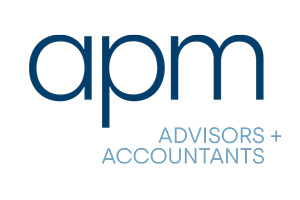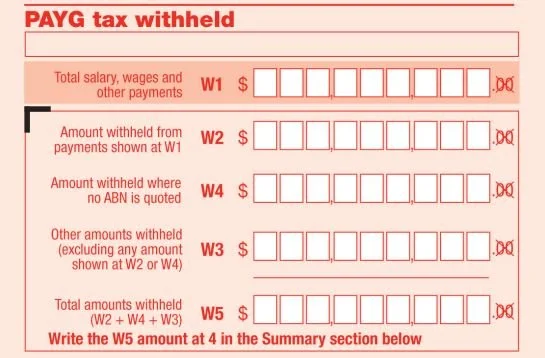
ATO targets in sharp focus
Personal income tax deductions and incorrect reporting
The ATO will receive an additional $80.3 to crackdown on non-compliance including:
· Overclaiming deductions; and
· Incorrect reporting of income
The spend is expected to increase tax receipts by $674.4m and payment by $80.3m over 4 years.
Cash payments and tax evasion by business
The ‘shadow economy’, cash-in-hand payments including underpayment of wages, visa fraud, and other nefarious activity that deprives the economy of the income from tax receipts, will come under scrutiny with the extension of the ATO’s Shadow Economy Program for a further 3 years from 1 July 2023. Over this period, the program is estimated to increase tax receipts by $2.1bn and payments by $685.2m over the 4 years from 2022-23.
Multinational business and the Tax Avoidance Taskforce
The ATO’s Tax Avoidance Taskforce will receive an additional $200m over 4 years from 1 July 2022 primarily to pursue multinational enterprises and large public and private businesses. This taskforce is expected to deliver a whopping $2.8bn in additional tax receipts and $1.1bn in payments over the 4 year period.
$3.6bn cut from external labour, advertising, travel and legal expenses
The Government has committed to saving $3.6bn by cutting what it spends on external labour, advertising, travel and legal expenses.
Other
Working with our Pacific Neighbours
Australia’s relationship in the Pacific has come into sharp focus of late. The Budget implements a series of initiatives to support development and labour mobility in the region:
· Additional infrastructure investment of $500m over 10 years in the Pacific and Timor-Leste will be provided through the Australian Infrastructure Financing Facility for the Pacific including an additional $50m for the establishment of a Pacific Climate Infrastructure Financing Partnership Facility.
· As previously announced, the Pacific Australia Labour Mobility scheme will be expanded to improve the benefits of the program for employers and workers including:
o underwriting employers’ investment in upfront travel costs for seasonal workers by covering costs that cannot be recouped from workers
o improvements to workplace standards for PALM visa holders, including increased workplace compliance activities
o allowing primary visa holders on long-term placements to bring partners and children to Australia, where sponsored by employers, with additional
social support including providing relevant minimum family assistance payments, with an initial rollout of 200 families
o the expansion of the existing aged care skills pilot programs for aged care workers.
· A new Pacific Engagement Visa for nationals of Pacific Island countries and Timor-Leste. Up to 3,000 additional places will be made available in addition to those provided through the existing permanent Migration Program.
Electric vehicle and hydrogen refuelling
As part of its Driving the Nation Fund, the Government will commit:
· $146.1m over 5 years from 2023-24 for the Australian Renewable Energy Agency to co-invest in projects to reduce emissions from Australia’s road transport sector
· $89.5m over 6 years from 2022-23 for the Hydrogen Highways initiative to fund the creation of hydrogen refuelling stations on Australia’s busiest freight routes, in partnership with states and territories, including $5.5m to LINE Hydrogen Pty Ltd for its George Town green hydrogen heavy transport project
· $39.8m over 5 years from 2022-23 to establish a National Electric Vehicle Charging Network to deliver 117 fast charging stations on highways across Australia, in partnership with the NRMA.
Broadband & mobile improvements for regional Australia
Almost $758m will be spent improving mobile and broadband connectivity in rural and regional Australia.
Foreign investment review board fees increase
The Government has increased foreign investment fees and will increase financial penalties for breaches that relate to residential land. Fees doubled on 29 July 2022 for all applications made under the foreign investment framework. The maximum financial penalties that can be applied for breaches in relation to residential land will also double on 1 January 2023.
Community sector organisations funding boost
An additional $560m over 4 years will be provided to community sector organisations ($140m pa). 46% of the funding will come from the Department of Social Services and around 34% to the National Indigenous Australians Agency.
Extension of Tariffs on Russian goods
The Government has extended the temporary additional tariff on goods imported from Russia and Belarus until 24 October 2023. The additional 35% tariff applies to goods that are the produce or manufacture of Russia and Belarus shipped to Australia on or after 25 April 2022.
Note that Ukrainian goods have previously been exempted from import duty for 12 months until 4 July 2022.
Infrastructure projects
The Budget has reallocated infrastructure projects, “reprofiling” $6.5bn in funding for existing projects. An additional $8.1bn over the next 10 years has been earmarked for priority projects including:
ACT
· $85.9m for the Canberra Light Rail Stage 2A project
New South Wales
· $1.4bn including $500m for planning, corridor acquisition and early works for the Sydney to Newcastle High Speed Rail, $268.8m for the New England Highway – Muswellbrook Bypass and $110m for the Epping Bridge
Northern Territory
· $550m including $350m to seal the Tanami Road and Central Arnhem Road
Queensland
· $2.1bn including $866.4m for the Bruce Highway, $400.0m for the Inland Freight Route (Mungindi to Charters Towers) upgrades, $400.0m for Beef Corridors and $210.0m for the Kuranda Range Road upgrade
South Australia
· $460m including $400m for the South Australian component of the Freight Highway Upgrade Program.
Tasmania
· $78m for projects in Tasmania, including $48.0 million for the Tasmanian Roads Package
Victoria
· $2.6bn including $2.2bn for the Suburban Rail Loop East
Western Australia
· $634.8m including $400.0 million for the Alice Springs to Halls Creek Corridor upgrade and $125m for electric bus charging infrastructure in Perth
National
· $18m to establish the High Speed Rail Authority to plan, develop, coordinate, oversee and monitor the construction and operation of the high speed rail network.
The economy
The Government appear keenly aware of the economic balancing act taking place, keeping the budget predominantly to election promises and redirecting existing initiatives to avoid exacerbating inflationary pressures. As the Treasurer said “Australians know this is a time of great challenge and change.”
The global economic environment has sharply deteriorated. Inflation has risen rapidly across advanced economies. The Russian invasion of Ukraine has significantly driven up global energy costs and exacerbated the impact of poor weather on global food prices. All of this impacts on Australia. Here are the highlights:
GDP – Real GDP is forecast to grow by 3¼ per cent in 2022-23 before slowing to 1½ per cent in 2023-24, as cost of living pressures and rising interest rates increasingly weigh on household disposable income and consumption.
The Government warn that with the highly uncertain global economic outlook, there are significant risks that could cause a sharper slowdown in domestic activity. Globally, key risks include a ‘hard landing’ or recession across major advanced economies, a sharper-than-expected downturn in China due to COVID-19 outbreaks and the property market downturn, a sudden tightening in financial market conditions and further energy price shocks stemming from the Russian invasion of Ukraine, which could drive inflation even higher.
And domestically, the full impact of recent floods is highly uncertain as the situation continues to develop.
Inflation – forecast to peak at 7¾ per cent in the December quarter of 2022. Supply disruptions have resulted in large price increases in home building, fuel and energy. Food prices remain elevated and have been further exacerbated by recent floods. Some of these pressures are expected to persist into 2023. Inflation is expected to remain elevated at 5¾ per cent over 2022-23 and 3½ per cent over 2023–24 before gradually easing and returning to within the Reserve Bank’s inflation target by 2024-25.
Deficit – lower the originally estimated at $36.9bn. However, the deficit is expected to climb to over $51bn by 2024-25 with the impact of higher inflation on indexed payments for services, the NDIS in particular.
Gross debt – is close to one trillion dollars and is at the highest level as a share of GDP in over 70 years.
Tax receipts – revised up by $54.4bn in 2022-23 and $142.0 billion over the 4 years to 2025-26.
Unemployment and wages growth – labour market conditions are expected to remain tight. The unemployment rate is forecast to rise to 4½ per cent by the June quarter of 2024.
Tight labour market conditions are expected to see annual wage growth pick up to 3¾ per cent by June 2023. However, high inflation is expected to see real wages fall over 2022-23 before rising slightly over 2023-24.
Energy – Electricity and gas prices are expected to rise sharply over the next 2 years, as the cost of energy market disruptions are passed through to households. Treasury has assumed retail electricity prices will increase by an average of 20% nationally in late 2022. Retail electricity prices are expected to rise by a further 30% in 2023-24.
Domestic gas prices remain more than double their average prior to Russia’s invasion of Ukraine. Retail prices are expected to increase by up to 20% in 2022-23 and 2023-24.










